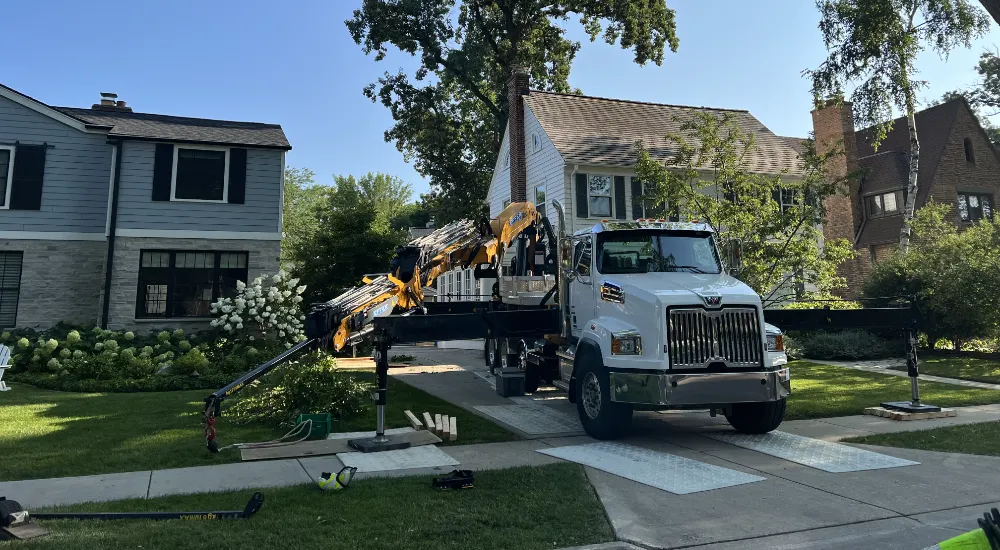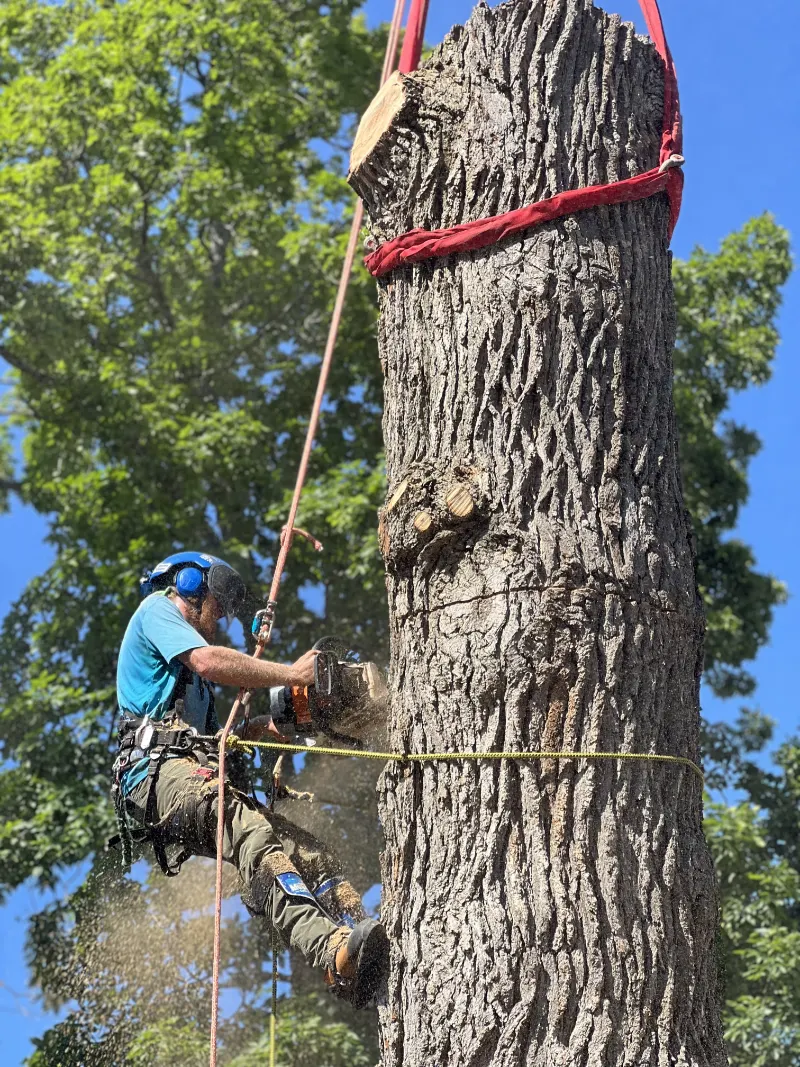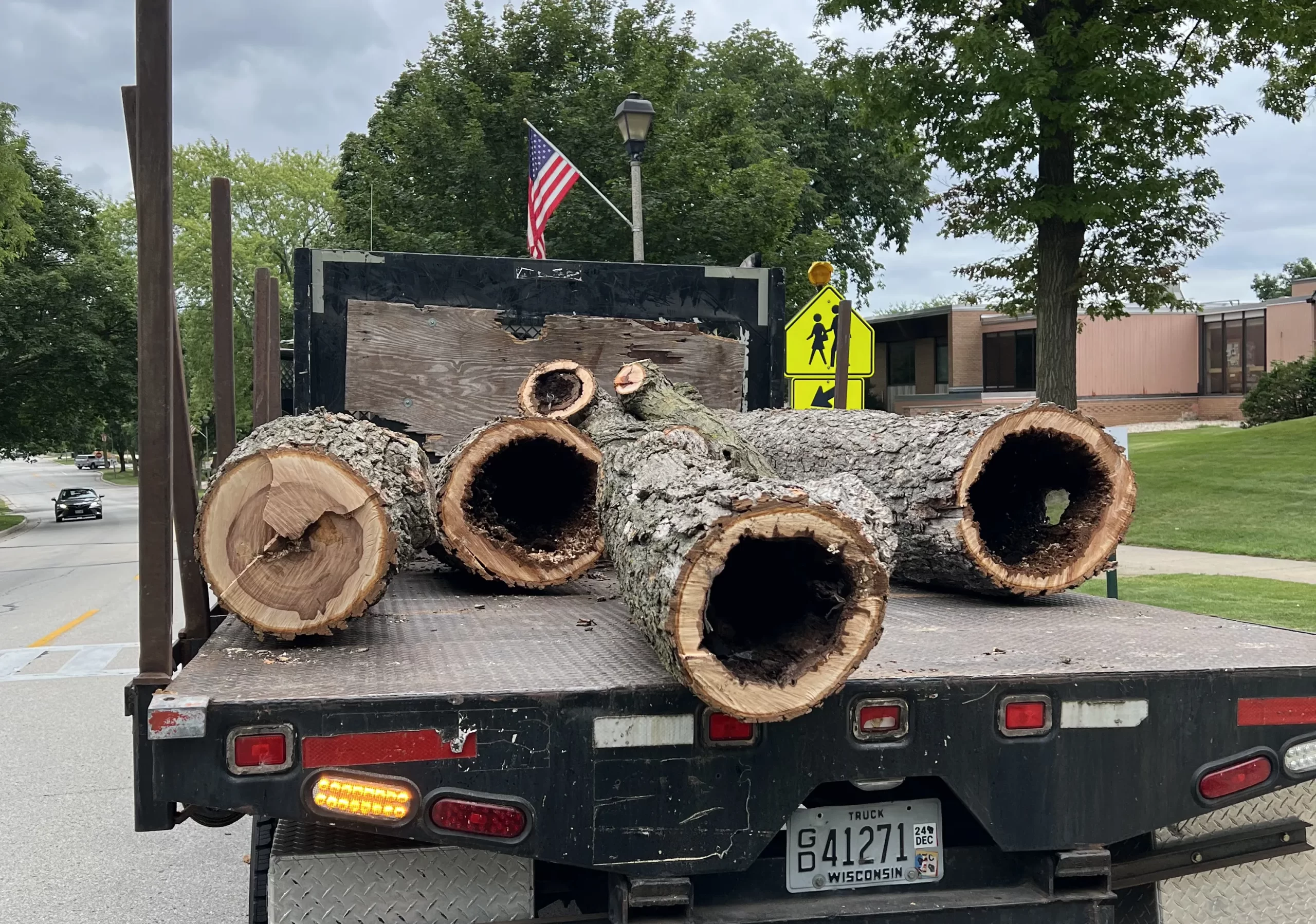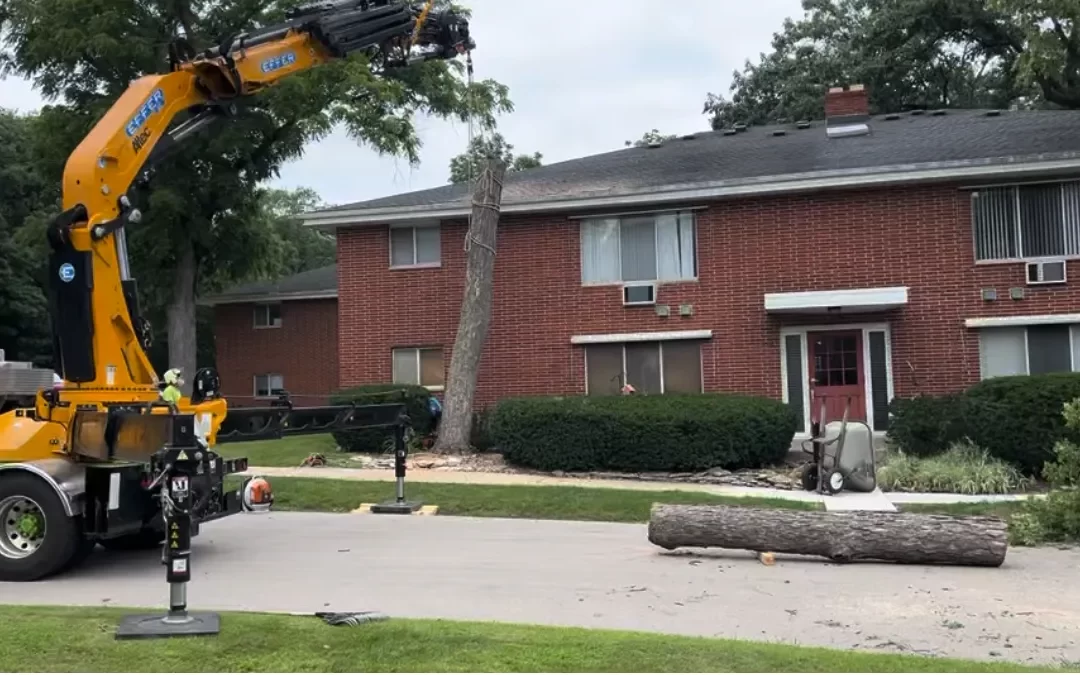When a tree poses a threat to your property, it can quickly become a homeowner’s worst nightmare. Such was the case with a precariously leaning sugar maple in Greenfield, WI, which had started shedding branches over a house. It was not just a matter of aesthetics anymore—it was a race against time to remove it before it caused serious damage.
This article will walk you through the process of safely removing a dangerous tree, drawing on real-life examples and expert advice. Whether you’re a homeowner, local resident, or property manager, understanding these steps can protect both your property and peace of mind.
Why Trees Become Dangerous
Removing a tree is not just about protecting your property; it’s about ensuring the safety of everyone around. A tree that’s leaning over a house poses an imminent danger. When branches start to break off, it’s a clear sign that the tree’s integrity has been compromised. It’s crucial to address these issues promptly to avoid potential disaster.
The complexity of the removal process means this is not a job for amateurs. Engaging a professional arborist ensures the task is handled with the utmost care and expertise. Their understanding of tree biology and structural integrity means they can assess the risk accurately and take the necessary steps to mitigate it.
The Importance of Professional Assessment
Before any action is taken, a professional assessment is vital. An experienced arborist will evaluate the tree’s condition, considering factors like its health, position, and the potential risk to surrounding structures. This step helps in planning a safe and effective removal strategy.
Understanding why the tree is failing can provide insights into preventing similar issues in the future. For instance, improper pruning might have contributed to the sugar maple’s hollowing. A professional can identify these mistakes and suggest better maintenance practices.
Engaging a professional also brings peace of mind. They carry out the task with precision, using their knowledge and tools to ensure safety. Homeowners can rest assured that the risk of damage is minimized, and the job is done right the first time.
Setting Up the Crane for Safe Removal

Once the tree has been assessed, the next step is setting up the crane. This is a crucial phase, as the crane’s placement determines the safety and efficiency of the entire operation. Proper setup ensures that no other trees or obstacles are in the way, allowing for a smooth removal process.
Stability is key when setting up the crane. The downriggers must be positioned on stable ground to prevent any movement during the lift. This ensures that the crane can safely support the weight of the tree pieces as they are cut and lowered.
Clear communication between the crane operator and the arborists is essential. They work together to coordinate each lift, ensuring each piece of the tree is removed safely and methodically. This teamwork is vital to avoid any mishaps during the process.
Piece by Piece Removal Process

Starting with the top branches, the team works its way down, systematically dismantling the tree. This methodical approach allows for better control and reduces the risk of large sections falling unexpectedly. It’s a slow process, but necessary for ensuring safety.
Throughout the process, constant checks are made to ensure stability and safety. The team is always prepared for the unexpected, adjusting their strategy as needed to accommodate any changes in the tree’s behavior or structure.
Discovering the Hollow Core

Once the tree is fully removed, it becomes evident just how urgent the removal was. The sugar maple’s core was completely hollow—a ticking time bomb that could have caused significant damage if left unchecked. This discovery underscores the importance of regular tree assessments.
A hollow tree is much weaker and more susceptible to falling. Had this tree fallen naturally, the consequences could have been disastrous. This highlights the importance of not delaying when signs of danger first appear.
Identifying the cause of the rot is essential for future prevention. In this case, it could have been improper pruning or environmental stressors. By understanding these factors, homeowners can take preventive measures to protect other trees on their property.
The Role of Proper Tree Maintenance
To prevent similar situations, proper tree maintenance is crucial. Regular pruning by a professional can help maintain a tree’s health and structure. This proactive approach can prevent many of the issues that lead to dangerous situations.
Routine inspections are also vital. They help identify potential problems early, allowing for corrective measures before a tree becomes a hazard. An arborist can provide valuable insights into the health of your trees and recommend appropriate actions.
Education is key for homeowners and property managers. Understanding the basics of tree care can go a long way in maintaining a safe and beautiful landscape. Simple actions, like watering and mulching, can support tree health and longevity.
Why Sugar Maples Are Prone to Problems
Sugar maples are a popular choice in landscapes but come with their own set of challenges. They are prone to internal rot, especially if improperly pruned or stressed. Understanding these weaknesses can help in managing them effectively.
Their shallow root systems can make them unstable, particularly in high winds. This instability is exacerbated if the tree is already compromised by internal decay. Regular checks and proper care can mitigate these risks.
Despite these challenges, sugar maples are a beautiful addition to any property. With the right care, they can thrive and add scenic beauty without becoming a hazard.
Benefits of Hiring a Professional Arborist
Hiring a professional arborist offers numerous benefits. Their expertise in tree biology and safety ensures that any removal is conducted with the highest standards. This expertise is critical in complex removals like the sugar maple in question.
Arborists also offer valuable advice on tree health and maintenance. Their insights can help prevent future hazards, ensuring your trees remain healthy and safe for years to come. Regular consultations can be a worthy investment in your property’s landscape.
Safety is paramount, and professionals have the tools and knowledge to execute removals safely. They are trained to handle the unexpected, reducing the risk to both people and property during the process.
The Cost of Delay
Ignoring a dangerous tree can have costly consequences. Beyond the potential for property damage, there’s the risk of harm to people. Addressing tree hazards promptly can save on expensive repairs and medical bills.
Procrastination can exacerbate the problem. A tree that appears stable one day can quickly become a hazard after a storm or heavy wind. Early action is crucial in mitigating risks and avoiding disaster.
Insurance may not cover all damages from fallen trees if negligence is found. Ensuring timely removal can protect against liability and provide peace of mind.
Ensuring Environmental Responsibility
Tree removal should be done with environmental responsibility in mind. Professionals can ensure the process is conducted sustainably, minimizing impact on the surrounding ecosystem. Consideration for local wildlife and habitats is part of this ethical approach.
Wood from removed trees can often be repurposed. Whether used for mulch, firewood, or other applications, recycling wood waste helps reduce environmental impact. This sustainable approach benefits both property owners and the planet.
Replanting is another way to mitigate environmental impact. After removal, consider planting a new tree to replace the loss. Choose a species that suits the environment and contributes positively to the ecosystem.
This tree removal is a reminder of the importance of addressing tree hazards promptly. For homeowners, residents, and property managers, understanding the steps involved in safe tree removal is invaluable. Proper maintenance and expert advice can prevent potentially dangerous situations, while also ensuring the beauty and health of your landscape. If you suspect a tree on your property is a risk, don’t delay—reach out to a professional arborist today. Your proactive steps today can save you from potential heartache tomorrow.

